By BRIAN SWEENEY
The Nikon Df brings to SLR’s what the Leica M-E and M Monochrom bring to rangefinders: a 21st century incarnation of classic camera controls into a full-frame digital camera. The Leica allows use of manual focus lenses going back over 80 years, rangefinder-coupled and in the 24x36mm format that they were designed. The Nikon Df can be used with almost all Nikkor F mount lenses going back to 1959 and S mount telephoto lenses going back to 1952, used with the N-F tube (a device designed by Nikon released in the early ’60s to bridge the transition of lenses from rangefinder to reflex format). That’s a lot of glass. And yes, I’ll talk in detail about the Df’s manual focus.
There are a lot of “Internet opinions” regarding this camera. As a long-time Nikon user and collector, I can understand why Nikon brought this camera out. Canon has a “never look back” approach to product design, even the online website with information about past cameras and lenses is the Canon Museum. They’re proud of their accomplishments, but completely willing to ditch compatibility with past products and move on.
With Nikon, it’s The Nikkor — The Thousand and One Nights, a romantic storybook of the people and products behind the company.
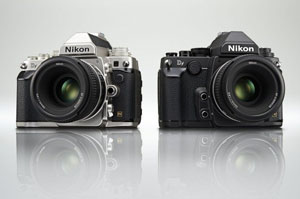
Right or wrong for a proper 21st century business model? Time will tell. At least they can sing “I did it my way.”
I bought my Df after it stood the “acid test” — ease of focus with manual focus lenses and ease of use with non-Ai lenses.
I brought a non-Ai Vivitar 135mm F2.3 Series 1 into the camera store. For anyone looking at a Df out of a box, put a charged battery into it for a test. This was required for the mirror to settle in the proper position.
The viewfinder is bright, all information in the finder easily seen even through my thick glasses, and focus was quick and snappy using any part of the screen.
Ease of use for non-Ai lenses: a quick read of the manual, learned how to setup non-CPU lenses, done. I’m used to “uncoupled” lenses with my early Photomic meters.
For Nikon RF users: the front dial is not for focus, it’s to dial in the aperture. For non-Ai lenses, set the aperture using the ring of the lens, then dial the selected aperture into the camera using the front knob. I used A mode, the camera selects the shutter speed and records the data into the EXIF of the image file.
For personal use, I rarely buy a camera when first introduced, let others shake it out for me. I made an exception for this one, a lot of manual focus Nikon glass was just begging to be used. I can use all but one, the rare collectible Nikkor 2.1cm F4 is a mirror-up lens and is not in the compatible lens list.
If you are at ease picking up a Nikon F3 with an E screen, the Df will be a natural. I’ve used digital SLR cameras for scientific and technical work since 1993. For personal use, I stuck with Nikon SLR and RF film cameras. The perfect combination was the Nikon F2AS and Nikon SP. In the “digital domain,” a Leica M9 takes the place of the Nikon SP.
Now the digital combo is the Df and M9 for color, M Monochrom for black and white. Will there be a Monochrom Df? I doubt it, but with Nikon — I’m sure their engineers want to.
The single biggest complaint heard online is the lack of interchangeable finders for the Df. Accuracy of manual focus with an SLR is only as good as the placement of the focus screen with respect to the image plane. Film has curvature and depth, sensors lay flat and utilize microlens arrays to collect light.
Placement of the sensor, mirror and focus screen to manually focus a lens on a digital camera is much more critical than with a film camera. The autofocus mechanism of an SLR is independent of the focus screen, is unaffected in cameras that allow screens to be changed. What the user gets for framing is much less critical than what the AF mechanism needs for accurate focus.
Digital cameras optimized for accurate manual focus using removable focus screens would require tighter tolerances than those of a film camera. This would require larger, heavier and more complex mechanisms to guarantee accurate agreement with the image plane. The alternative is to use a non-removable screen.
My opinion? Nikon did a great job and simply saved me the trouble of replacing a K screen with an E screen as I did on my FE2, F, F2 and F3.
I have no trouble using the Nikkor 55mm F1.2 Ai series lens, one of the more difficult lenses to focus wide open.
Straight out of camera JPEG resized in Photoshop:
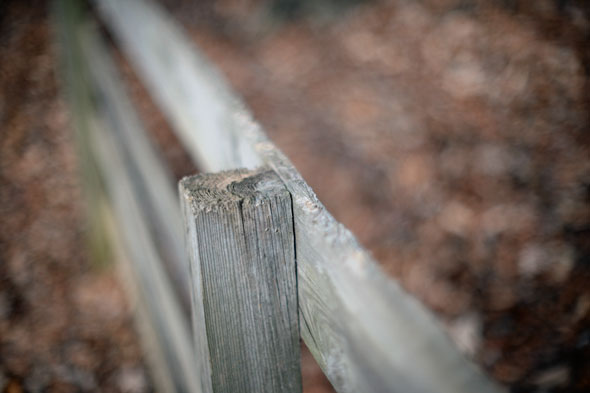
The 16MP sensor is a good fit for older glass, which typically resolved well in the 50 lp/mm range. Tests of Nikon glass at DxOMark seem to bear this out, with most Nikon lenses in the 16MP range. As Leica users have known since the Leica M8 and Epson RD-1 were introduced, lower contrast lenses with some veiling flare have an advantage in the digital domain for preserving highlights and shadow detail. The larger sized pixels of the D4/Df sensor gives it a large native dynamic range, high saturation count and excellent low noise performance.
The other day I took the Df to the Marine Corps Museum in Quantico, VA. I bring quite a few lenses there, always learn something new about history and about a lens when I visit.
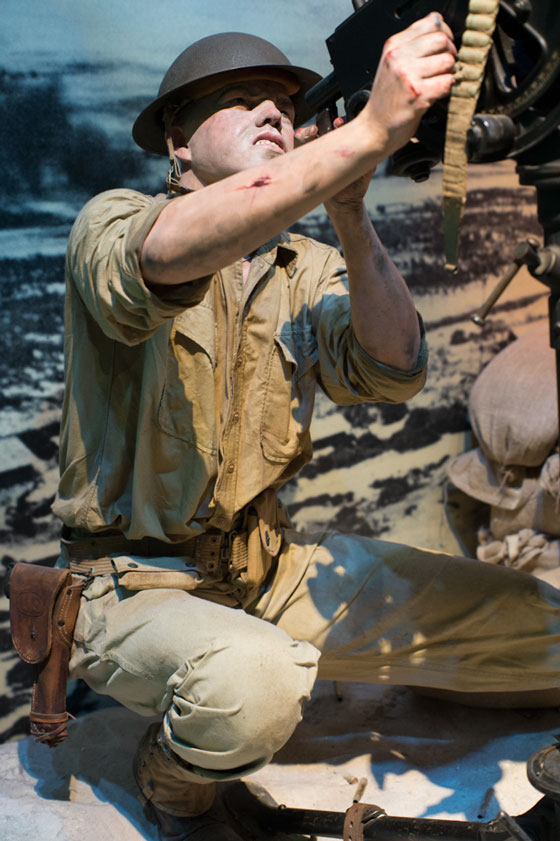
It was during the Korean War that David Douglas Duncan used Nikkor lenses on his Leica camera, and brought the attention of the photographic world to the Japanese camera industry. This museum has the most life-like mannequins that you will see, made from face masks of some of the Marine volunteers that donate their time. Computer-driven sound and light shows are used to reenact several key battles, including a night on the Chosin Reservoir. Characters are sequentially lit as the story is told, usually for 15-20 seconds.
At ISO 5,000 the Nikon Df performs about like the M Monochrom.
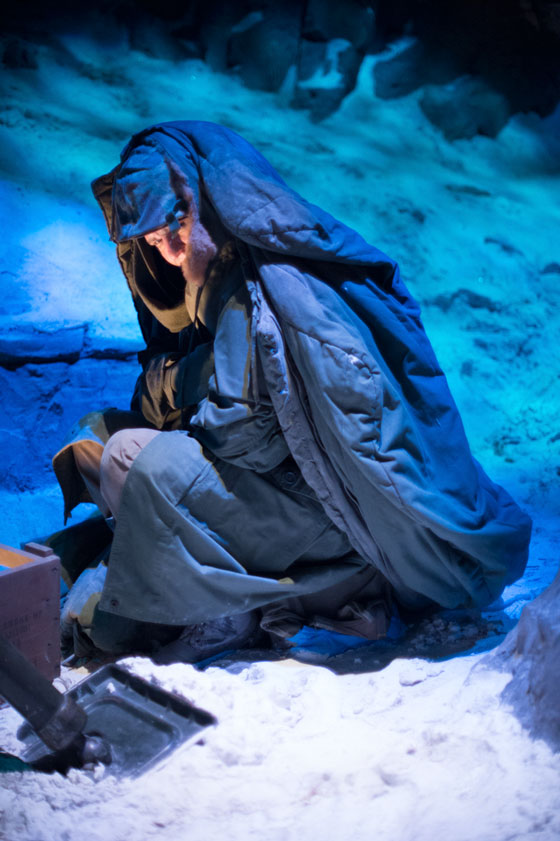
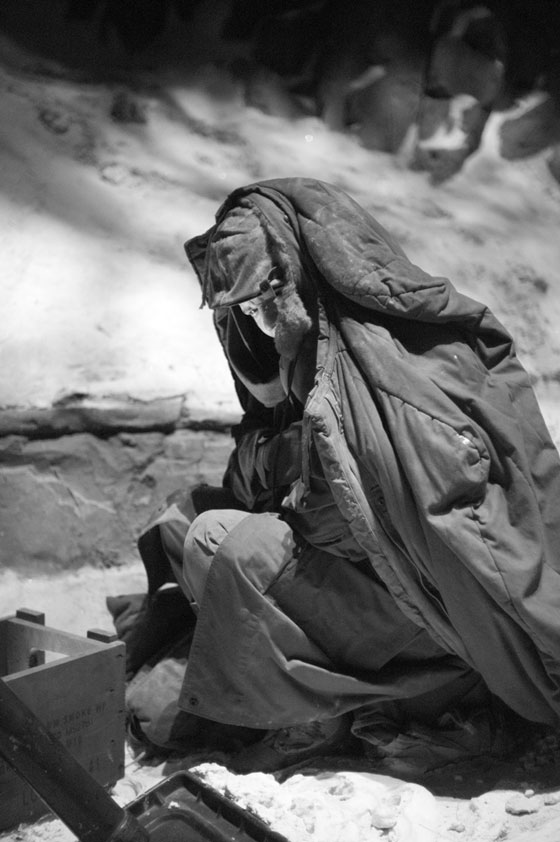
I tested high ISO up to 20,000, this display was dark. Framed, then focused on the eye. Again, I find focusing using any part of the screen to be as easy as any of my film SLRs.
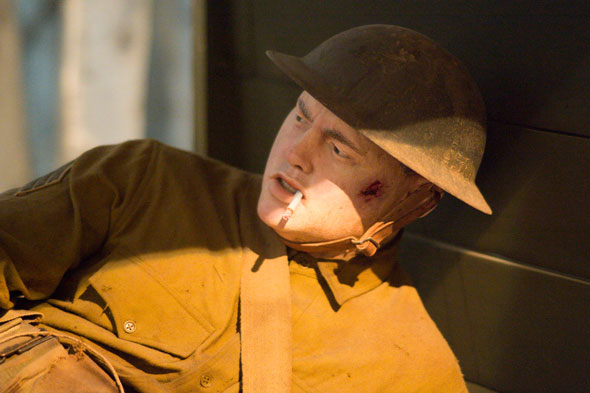
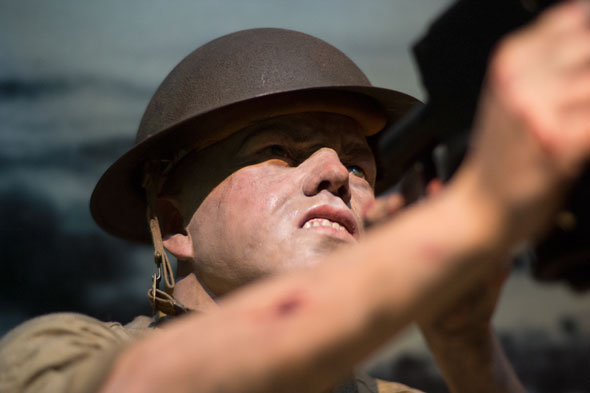
“Geek Note”: I HEX-patched my .NEF files to trick Lightroom 4.4 to believe the files are from a Nikon D4, which it knows how to handle. For anyone with a HEX patch or EXIF utility, the byte to change is at file offset ‘0183’x: change the ASCII f to an ASCII 4.
I wrote a piece of code to find the name of the camera and then change it, took 20 minutes to modify a Fortran program written 20 years ago to batch process RAW files from the Kodak DCS 200. Just because I like knobs and rings to control a camera doesn’t mean that I don’t like computers.
Is the Df a better camera choice over a D600 or D800?
If you want to use pre-Ai glass with the D600 or D800, you can still “slice and dice” the aperture ring to make it compatible with the Ai coupling. The Df allows you to use unmodified lenses, and I have a lot of them.
If you are used to interfacing with a camera via its computer readout, the D600 and D800 follow the Nikon N8008 path. I’ve had one of those for 25 years now. I like it, but grab an F2 or F3 over it 95% of the time.
If you want to use direct controls following a traditional film camera, such as what the Leica M digitals give us, then the Df is the better camera. It’s like setting a Nikon F3 down next to a Leica M7. Format the SD card, select a non-CPU lens, don’t bother with the menu for the rest of the day.
To me, the Nikon Df complements a Leica rangefinder due to size and traditional control. In the day, Leica M3 and Nikon F2 were the perfect RF and SLR. Now, the M-E and M Monochrom are the perfect rangefinders, the Df is the closest there is for an SLR. The M Typ 240 is a great camera, just not for me.
A quick glance at the top deck tells you everything that you need to know, and all the control required to get the shot is at your fingertips. Position of the controls will be very natural for any user of 1970s Nikon SLRs. The release side is similar to the Nikon F2, with the PSAM dial in the place of the advance lever. Lay your finder over the PSAM dial just like you would the F2 film advance cover to reach the release. Very comfortable.

The “rewind” side is similar to the F3, with ISO and exposure compensation in the same location.

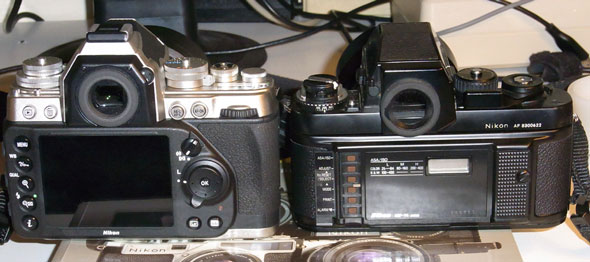
Even all those buttons for the Df are in the same place as those of the MF-14 data back of the F3. Coincidence? I don’t think so.
The Df is compact. That may mean giving up a few things like dual SD slots and a bigger battery, perhaps even the interchangeable screens.
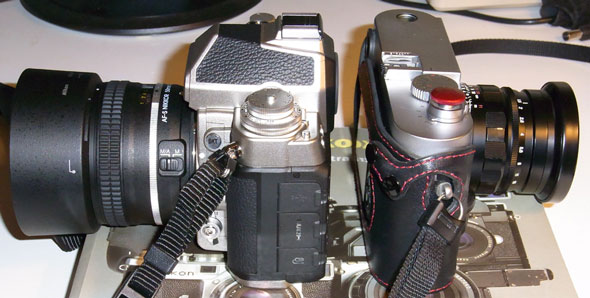
Well worth the sacrifice to get a smaller and lighter camera. Nikon tells us that the Nikon Df is “digital fusion.” After using this camera for a week, it is the “Nikon difference.”
For more Df sample images visit Leica Place with a dedicated discussion.
+++ You can order the Nikon Df and Special Edition Nikkor 50mm F1.8G lens from
- Amazon (black body / silver body / black kit / silver kit / 50mm F1.8G SE)
- B&H (black body / silver body / black kit / silver kit / 50mm F1.8G SE)
- Adorama (black body / silver body / black kit / silver kit / 50mm F1.8G SE)


